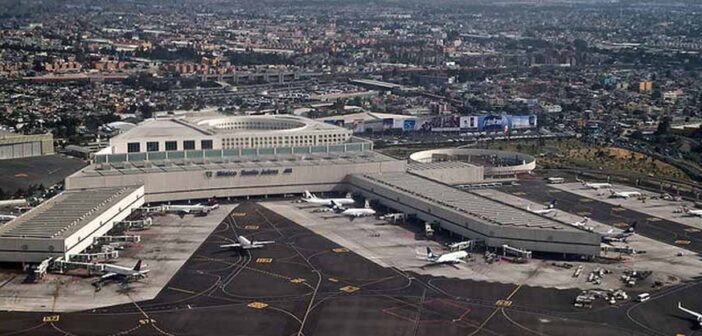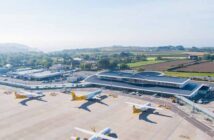Mexico City International Airport, officially Benito Juلrez International Airport (MEX), serves as the primary hub for Mexico’s capital, located just 8 kilometres east of the historic city centre. Handling over 56 million passengers in 2024, this busy airport connects to over 100 destinations across the Americas, Europe, the Middle East, and Asia with more than 25 airlines, including Aeroméxico, Volaris, and Delta. Its two-terminal layout, extensive amenities, and robust transport links offer a practical experience for travellers exploring the city or connecting to further destinations.
The passenger experience at MEX is generally efficient, though its high traffic can lead to challenges. The airport’s two terminals—Terminal 1, serving most airlines, and Terminal 2, primarily for Aeroméxico and its SkyTeam partners—are 3 kilometres apart, connected by the free Aerotrén monorail for passengers with boarding passes and a paid bus for others.
Check-in and security typically take 30 to 45 minutes, but peak hours, especially mornings, can see queues stretching to an hour. Passengers are advised to arrive three hours early for international flights and two for domestic to account for immigration, customs, and security checks.
The Skytrain in Terminal 1’s Concourse D eases long walks, though maintenance or crowded conditions can slow transfers. Staff are often helpful, but signage can be unclear, and travellers recommend checking terminal assignments carefully, as airlines like United and American operate from Terminal 1, while Delta uses Terminal 2. Accessibility is well-supported with ramps, lifts, and wheelchair assistance, though pre-booking with airlines ensures timely service.
Access to the airport is convenient, with multiple transport options linking to Mexico City and beyond. The Metrorail Orange Line and Metro Line 5’s Terminal Aérea station connect to downtown in about 20 minutes for £0.25, though large luggage is restricted, and the walk to Terminal 2 can be tricky. Metrobْs Line 4 offers express service to San Lلzaro for £1.50, requiring a smart card from terminal vending machines.
Taxis cost around £10 to the city centre, while Uber, at £6 to £10, is a popular choice, though pick-up zones can be confusing due to taxi driver disputes. Car rental agencies like Avis and Hertz are located at the Rental Car Center, accessible via the free MIA Mover from Terminal 1’s Level 3. The drive to downtown via the Dolphin Expressway takes 15 to 20 minutes, but traffic or ongoing construction, such as fence upgrades, can add delays. Parking includes 3,000 spaces across Terminal 1 and 2 lots, with rates starting at £3 per hour.
The airport’s layout spans two terminals, with Terminal 1’s 800-metre-long concourse housing 33 contact gates and 20 remote stands, and Terminal 2 offering a more compact design. Terminal 1’s ground floor handles arrivals with 22 baggage claim carousels, while the upper floor hosts check-in, security, and a 900-metre departures concourse.
Terminal 2’s upper level includes security and gates, with arrivals on the ground floor. The Aerotrén, operating from 5:00 AM to 11:00 PM, takes 4 minutes to connect terminals, though buses are needed for oversized luggage or outside hours. Congestion at security and immigration, particularly in Terminal 1’s Concourse D, can slow progress during peak times. A £9 billion modernisation plan, including a new Concourse K by 2029, aims to ease crowding.
Dining and retail options are plentiful. Terminal 1’s food court offers fast food like Starbucks and Subway, alongside local taco spots near the bus ticket counters, open 24/7. Terminal 2 features Maison Kayser and sit-down restaurants serving Mexican cuisine. Duty-free shops, including Dufry, stock perfumes, liquor, and souvenirs, though some travellers note high prices. For better value, shopping in downtown Mexico City is recommended. Free Wi-Fi is reliable across both terminals, with USB ports and charging stations widely available.
Facilities cater to diverse needs. Currency exchange counters, like Globo Cambio and Travelex, and ATMs operate 24/7, with the best rates at airport booths. Luggage storage is available on Terminal 1’s ground floor and Terminal 2’s lower level, and lost and found offices are located near Gate 2 in Terminal 1 and between Gates 1 and 2 in Terminal 2. VIP lounges, such as Aeroméxico’s Salَn Premier and American Express Centurion, offer showers, snacks, and Wi-Fi for £20 to £43, with some accessible via Priority Pass. Hotels like the Hilton and NH Collection are integrated into the terminals, while izZzleep pods provide budget-friendly rest. Medical clinics, children’s play areas, and accessible restrooms are available 24/7. Smoking is restricted to outdoor areas landside.
On-time performance is challenged by the airport’s high capacity, with 61 operations per hour often exceeded, leading to average delays of 30 minutes. Weather, air traffic control issues, or runway constraints due to the airport’s 2,230-metre elevation can cause disruptions. Real-time updates are available via the airport’s website or FlightStats. Passengers can claim up to €600 for delays over three hours under EU regulations if airline-related.
Connections are efficient for a hub of its size, with Aeroméxico and SkyTeam partners facilitating seamless domestic-to-international transfers in Terminal 2. Minimum connection times are 50 minutes for domestic and 90 minutes for international, though immigration for non-Schengen flights can take up to an hour. The Aerotrén simplifies terminal transfers, but passengers without boarding passes must use the slower bus. Checking airline and terminal details is key to avoid delays.




